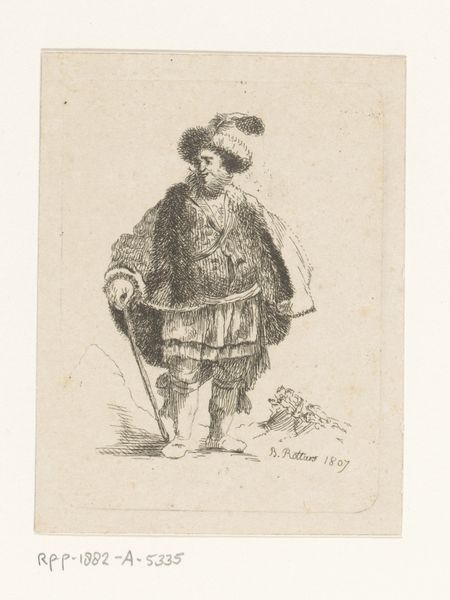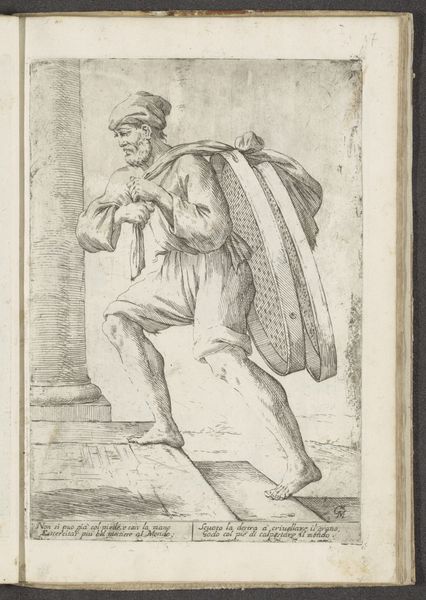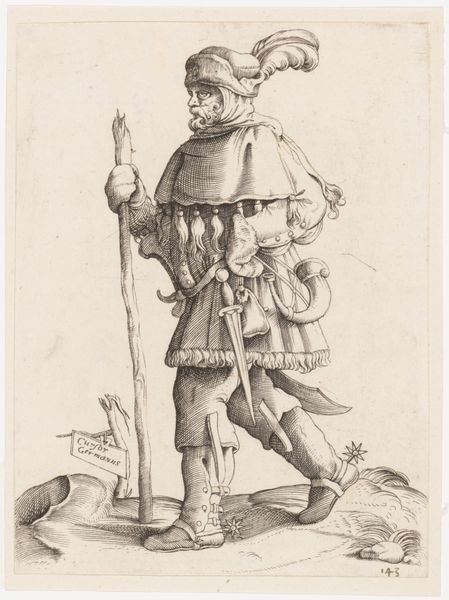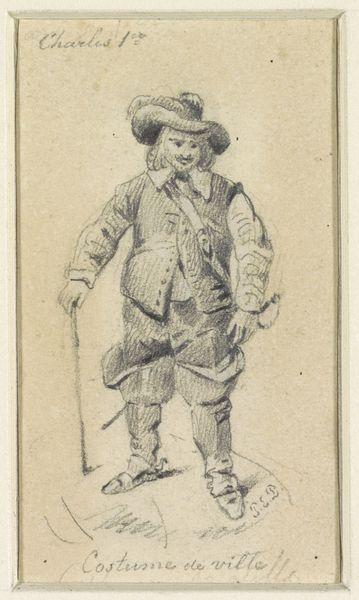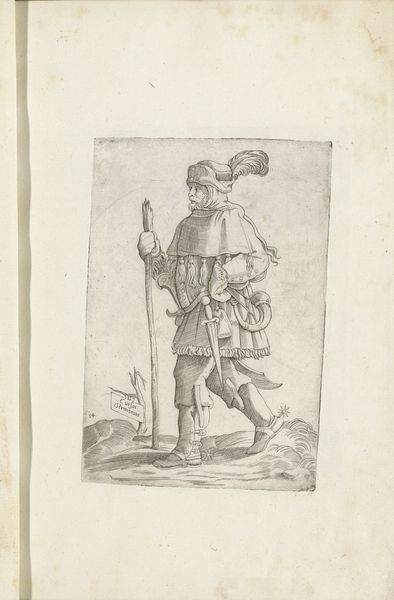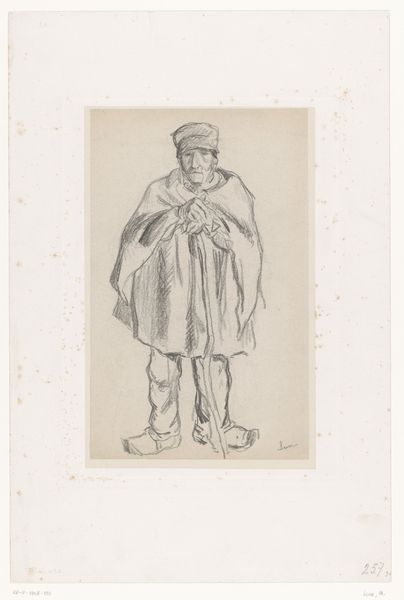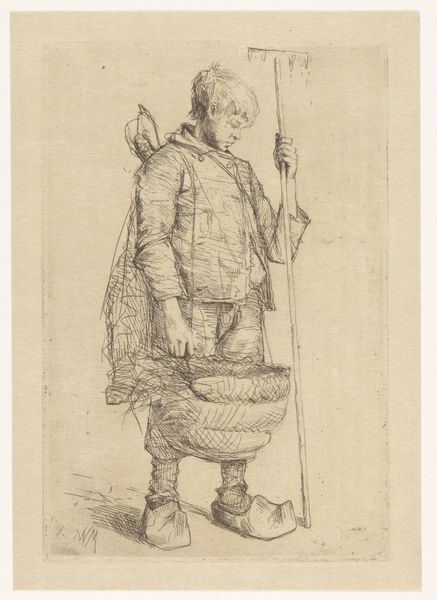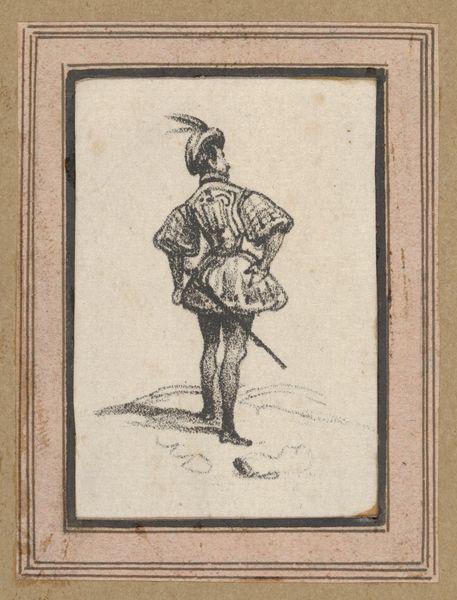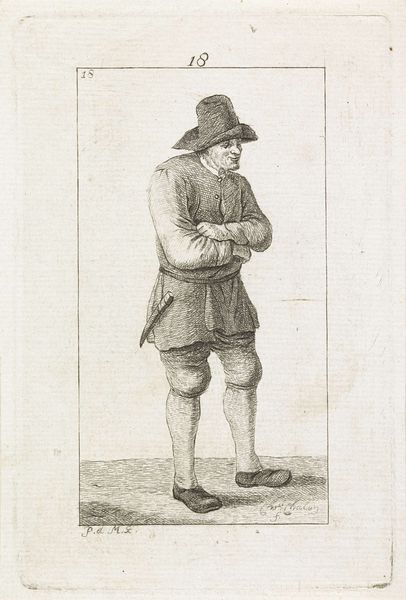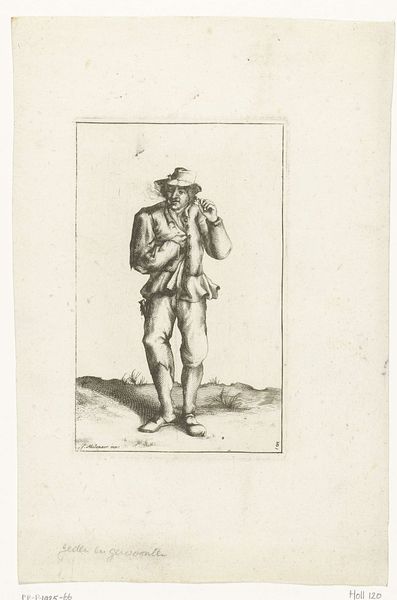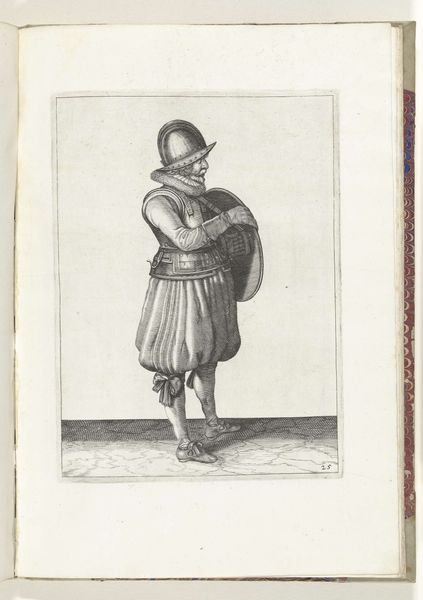
#
aged paper
#
toned paper
#
light pencil work
#
quirky sketch
#
sketch book
#
personal sketchbook
#
idea generation sketch
#
sketchbook drawing
#
storyboard and sketchbook work
#
sketchbook art
Dimensions: height 265 mm, width 195 mm, height 150 mm, width 105 mm
Copyright: Rijks Museum: Open Domain
Curator: Standing before us is "Standing Man," a 1569 drawing by Ferando Bertelli, currently held here at the Rijksmuseum. It's rendered in light pencil on what looks like toned paper. Editor: There's a fragility to it, isn't there? The man seems both substantial in his attire, yet somehow impermanent, almost fading into the aged paper. The etching evokes a particular air of social distinction though; it definitely looks like the portrayal of a man with at least some resources. Curator: Indeed. Bertelli likely intended this not as a finished work, but rather as a study, maybe even something akin to a design for fashion circulating amongst the elites. Consider the meticulous detail of his clothing: the doublet cinched at the waist, the voluminous breeches, and the cape slung so casually over one shoulder. He is equipped with a sword! These sartorial elements were highly politicized at the time. They communicated social status, political alliances, and personal wealth in the late Renaissance. Editor: It makes you wonder about Bertelli's social positioning as well. Who was his audience? This sketch definitely suggests an interesting relationship to power dynamics and identity, it also strikes me that perhaps this sketch comes from one of his personal sketchbooks or it was potentially sketchbook art from its time? I'd be curious to delve into his motivations as a social actor within his contemporaries and within that societal ecosystem. What philosophical influences were present, or societal tensions that could inform such artwork? Curator: Those are critical questions. Consider the historical context, in particular how visual culture shapes these identities: sixteenth-century fashion served as a powerful tool. Who gets represented, and how they get represented in print form become crucial. This imagery undoubtedly played a significant role in shaping and reinforcing societal expectations. I believe this kind of drawing reflects artistic creation within certain institutions. Editor: Absolutely. This opens up fascinating avenues to further explore how this sketch embodies these considerations. Artworks don’t just reflect these ideas, but become vehicles that reproduce, challenge, or at least offer a social commentary to existing norms. Curator: Precisely. Ultimately, this single "Standing Man" invites us to ponder on how identity has always been a deliberate social and cultural construct. Editor: Leaving us to consider how those constructs resonate even today.
Comments
No comments
Be the first to comment and join the conversation on the ultimate creative platform.

